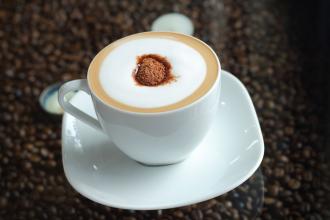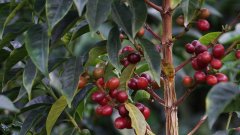Introduction to the Galapagos Islands Coffee producing area Santa Cruz Island
In the early 1990s, however, the Gonzalez family bought Hassenda Coffee Plantation. Local microclimates caused by the Humboldt Current, intense equatorial sunlight and sharp temperature variations (43 ° C at sea level and 10 - 16 ° C at 275 m above sea level) provided the unique favourable conditions that prompted the Gonzalez family to expand coffee plantations.
Since then, the area of the coffee plantation has doubled through the cultivation of early land. Due to the unique role of the Galapagos Islands in the historical process, the Ecuadorian government has designated the islands as a national park, no longer allows land reclamation for new agricultural land, and prohibits the introduction and use of fertilizers, pesticides, herbicides and other chemical agents. Therefore, coffee in the Galapagos Islands is recognized as a natural product Coffee is grown in Saint Crstóbal. San Cristobal is one of the larger islands in the Galapagos Islands and the only island in the archipelago with sufficient fresh water. At an altitude of 410 metres, there is a small lake called El Junco, which forms streams along the rocks and volcanic rocks on the southern slope of the island. Fresh water rich in minerals nourishes the soil of San Cristobal, keeping it permanently moist and fertile.
In 1875, Ecuador's indigenous Mauel J. Cobos planted about 100 hectares of arabic bourbon coffee trees in the Hacienda El Cafetal in San Cristobal. The altitude of the plantation is between 140 and 275 meters, and the climate of the region is equivalent to that of 910-1830 meters inland. This gradient is very suitable for the growth of very hard coffee beans (SHB) with high acidity and is also the key to the quality of coffee.
As the world's coffee industry moves toward a mass-production model, San Cristobal's smaller, less reliable coffee industry is in trouble and likely to be abandoned for lack of profit

Important Notice :
前街咖啡 FrontStreet Coffee has moved to new addredd:
FrontStreet Coffee Address: 315,Donghua East Road,GuangZhou
Tel:020 38364473
- Prev

Panamanian Coffee Water washes Rose Summer GEISHA Manor
Affectionate Manor, which covers an area of about 12.5ha, is a miniature estate in Panama. According to the owner, the 8.5ha varieties range from the common typica, Red Catuai and Pacamara. After 2008, a few areas began to grow Geisha coffee, which now accounts for nearly half of the total.
- Next

Smooth taste, sweet Venezuelan coffee San Cristobal coffee
Venezuelan coffee tastes different from other coffee in Latin America. It is delicious, light and less sour than traditional coffee, which makes it not only blended but also distinctive. Venezuelan coffee beans taste smooth and sweet. Compared with other coffee in Latin America, Venezuelan coffee is lighter, full-grained, sour, sweet and deep. Venezuela
Related
- Does Rose Summer choose Blue, Green or Red? Detailed explanation of Rose Summer Coffee plots and Classification in Panamanian Jade Manor
- What is the difference between the origin, producing area, processing plant, cooperative and manor of coffee beans?
- How fine does the espresso powder fit? how to grind the espresso?
- Sca coffee roasting degree color card coffee roasting degree 8 roasting color values what do you mean?
- The practice of lattes: how to make lattes at home
- Introduction to Indonesian Fine Coffee beans-- Java Coffee producing area of Indonesian Arabica Coffee
- How much will the flavor of light and medium roasted rose summer be expressed? What baking level is rose summer suitable for?
- Introduction to the characteristics of washing, sun-drying or wet-planing coffee commonly used in Mantenin, Indonesia
- Price characteristics of Arabica Coffee Bean Starbucks introduction to Manning Coffee Bean Taste producing area Variety Manor
- What is the authentic Yega flavor? What are the flavor characteristics of the really excellent Yejasuffi coffee beans?

